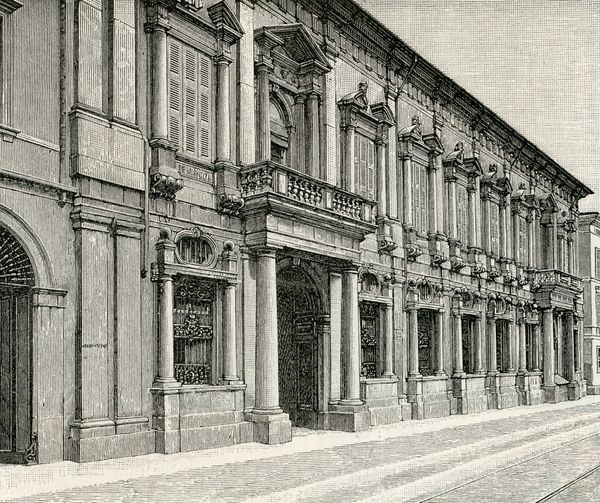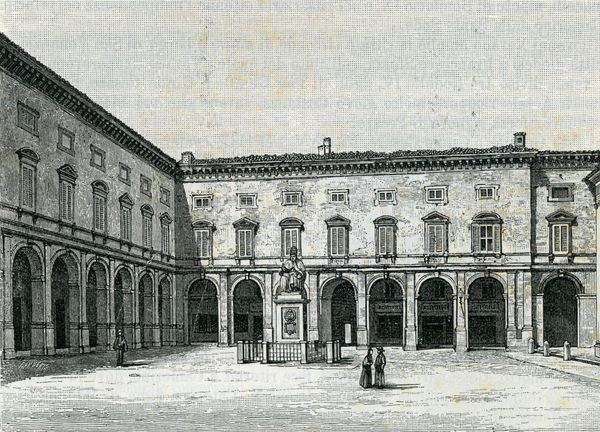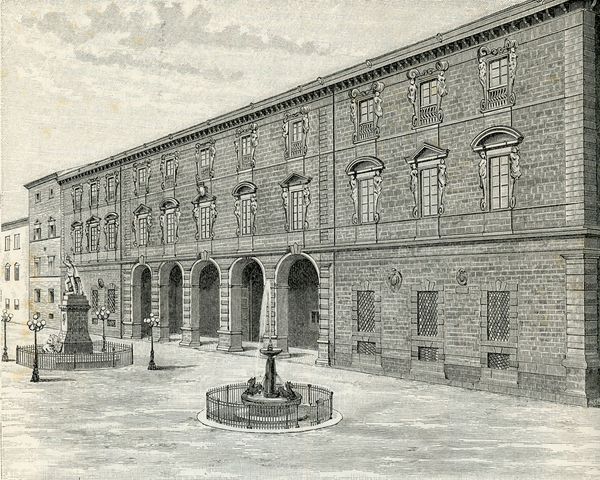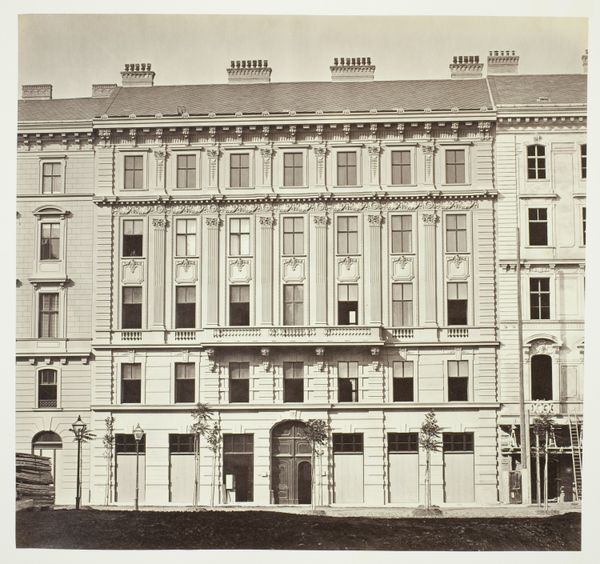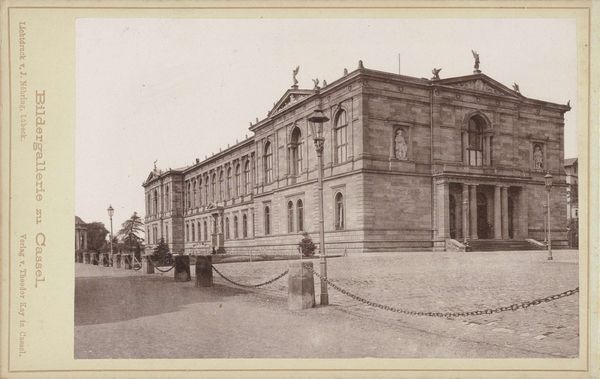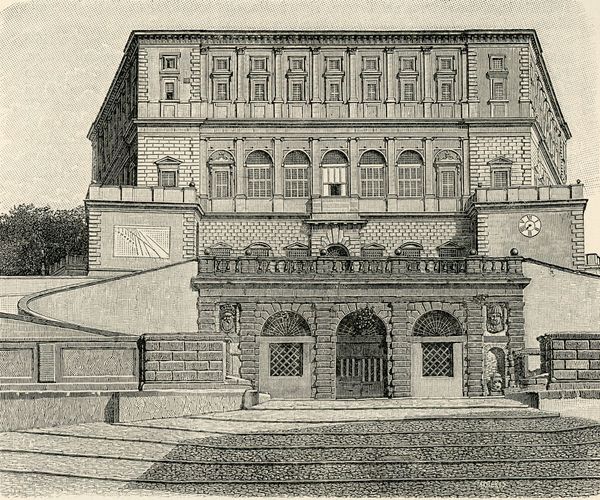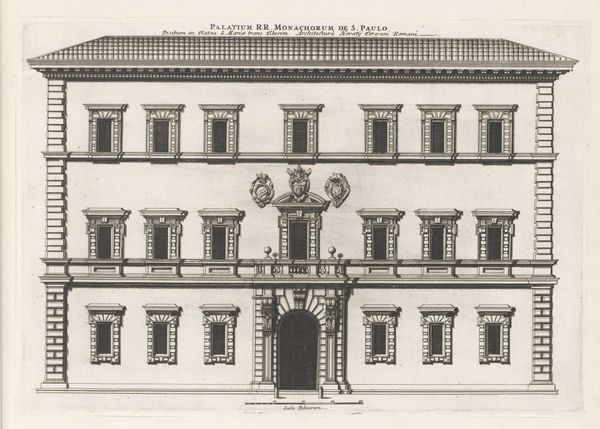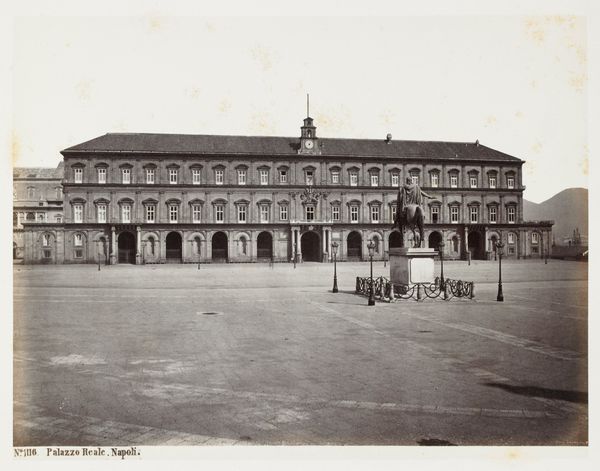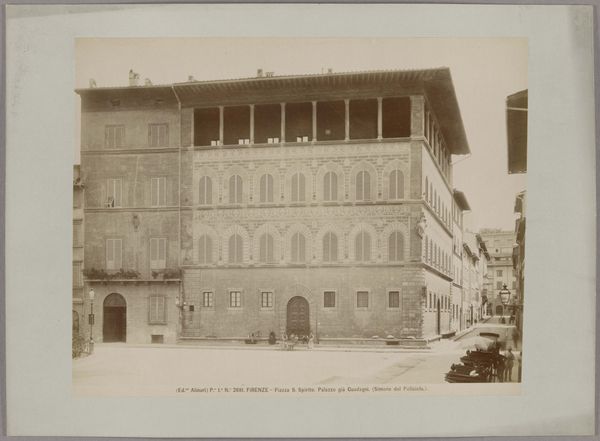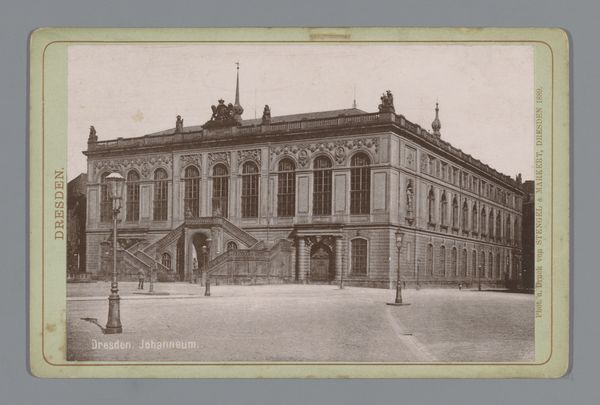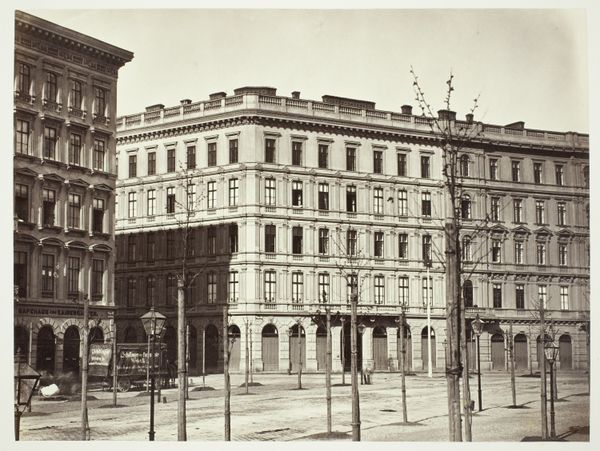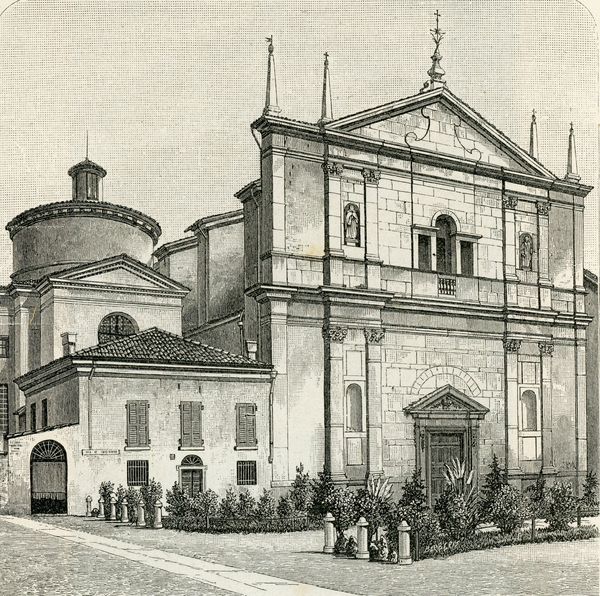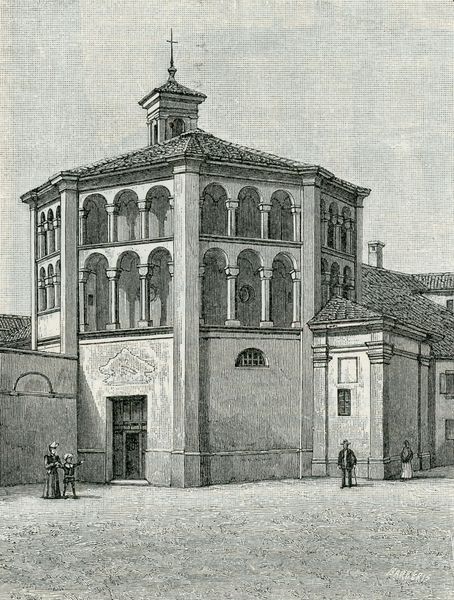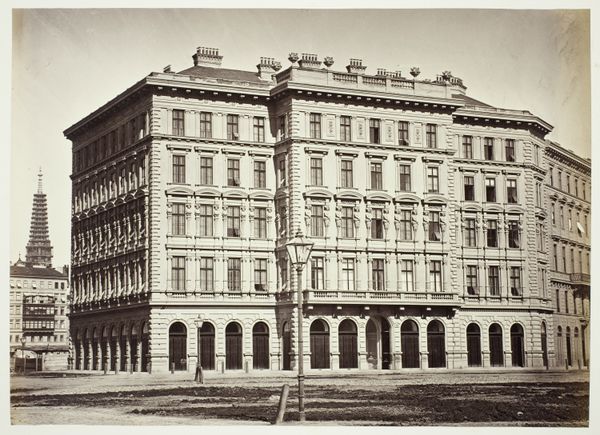
Copyright: Public domain
Curator: The Palazzo Thiene Bonin Longare, completed in 1572, designed by Andrea Palladio. Note its distinctive articulation of classical elements. What's your first impression of it? Editor: It feels...imposing. It has that formal Renaissance gravitas, but softened by the surrounding street. It’s very public and stately. Curator: Indeed. Palladio’s designs often aimed to connect classical ideals with the everyday lives of the city. See how the facade incorporates stacked orders - Doric below, Ionic above. Each element symbolizes aspects of order, virtue, and tradition, grounding the structure with deep-seated cultural memory. Editor: Absolutely. Thinking of it now, it serves as an idealized backdrop for public life. Given Palladio's historical context, who do you think the symbols in his architectural design intended to impress, or address? Curator: Well, consider Palladio's clientele. He was designing for the elite of Vicenza, emphasizing their cultural sophistication and reinforcing their status by aligning their dwellings with the legacy of ancient Rome. But I suspect the long-term aspiration went further. It represents an ordered civic vision intended to convey a stable and cultured city-state, influencing behaviors. Editor: It's fascinating how architecture, like this palazzo, can embody civic virtues. Does Palladio's style carry symbolic weight or communicate particular aspects of urbanity specific to his location, would you say? Curator: Palladio strategically employed classical forms to shape and elevate the civic identity. In my view, Vicenza, and the Veneto more widely, consciously saw itself as a New Rome. Each carefully calibrated detail communicates prestige, a return to an antique cultural height, meant not just for the building's owner, but the city's imagined future, as well. Editor: It is still functioning in the present! So as a kind of social document, it continues to tell a rich and lasting story of its society, what it valued, and how it aspired to be remembered. Curator: Yes, and by examining how a palazzo is still encountered within its community, one also gleans an understanding of what collective memory architecture and place continue to nurture over time.
Comments
No comments
Be the first to comment and join the conversation on the ultimate creative platform.
